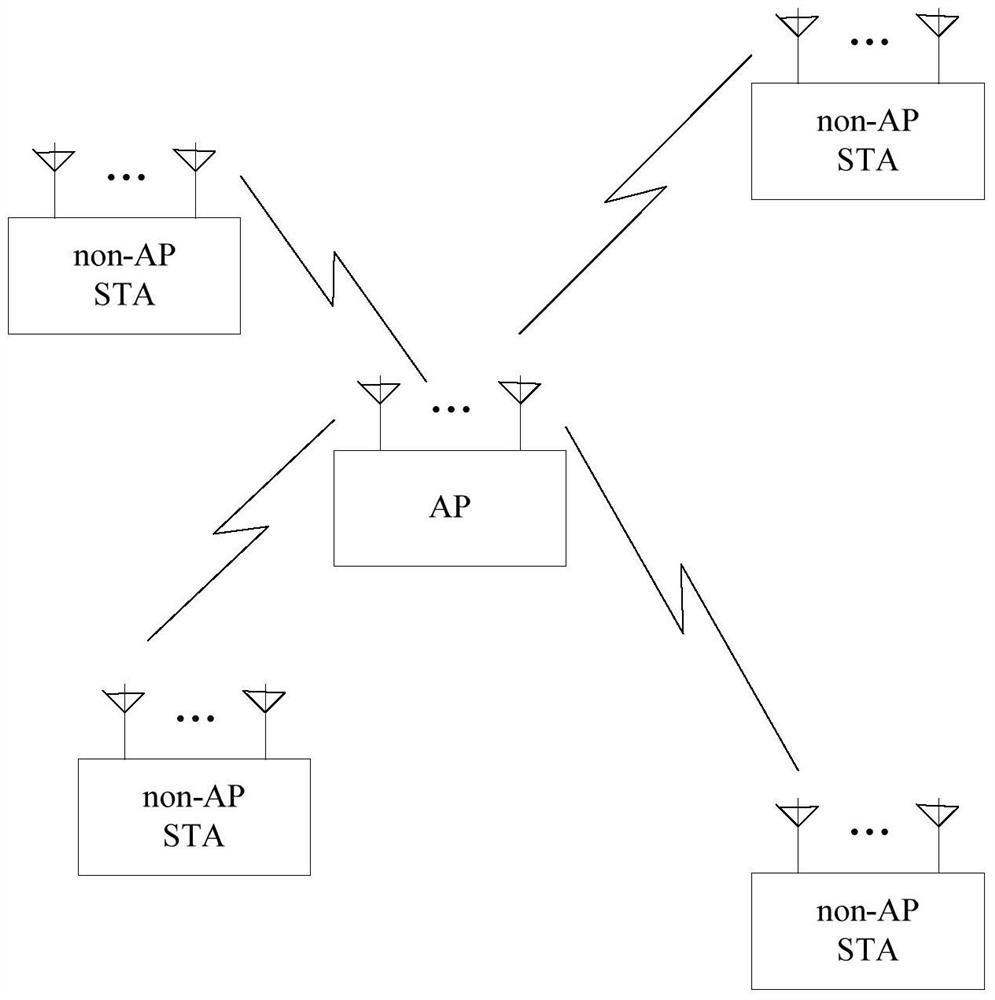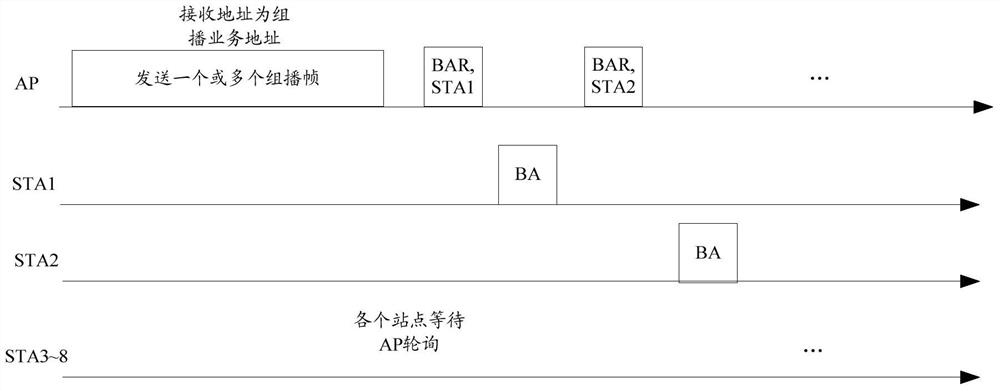A reply method and device for multicast data transmission
A technology of multicast data and response device, applied in the field of wireless communication, can solve the problems of inability to obtain data reception quality of all sites, poor reception quality of sites, etc.
- Summary
- Abstract
- Description
- Claims
- Application Information
AI Technical Summary
Problems solved by technology
Method used
Image
Examples
Embodiment 1
[0189] In this example, the AP is the first node, that is, the multicast data sender, and the station is the second node, that is, the multicast data receiver. In addition, the multicast data sender can also be some other devices, such as base stations, A special site capable of communicating with multiple sites can be considered as a multicast data sender as long as it can send multicast data. Here, the sending or receiving of multicast data actually refers to the sending or receiving of multicast frames.
[0190] The AP and multiple stations STA1~STA20 form a BSS. The AP establishes a multicast service 1 with STA1~STA10. The corresponding STA1~STA10 considers it a multicast group 1, and assigns a multicast MAC address 1 to identify the multicast For services, the main difference between multicast MAC addresses and unicast MAC addresses (such as STA1~STA10) is that the multicast address sets the I / G bit of the address to 1, and the unicast address sets this bit to 0, for examp...
Embodiment 2
[0201] In this example, the AP is the first node, that is, the multicast data sender, and the station is the second node, that is, the multicast data receiver. In addition, the multicast data sender can also be some other devices, such as base stations, A special site capable of communicating with multiple sites can be considered as a multicast data sender as long as it can send multicast data. Here, the sending or receiving of multicast data actually refers to the sending or receiving of multicast frames.
[0202] The AP and multiple stations STA1~STA20 form a BSS. The AP establishes a multicast service 1 with STA1~STA10. The corresponding STA1~STA10 considers it a multicast group 1, and assigns a multicast MAC address 1 to identify the multicast business.
[0203] The AP sends multiple multicast service 1 data to STA1~STA10. After the sending is completed, the AP sends trigger information, such as the trigger frame MU-BAR to stations STA1~STA10. Assuming that the total sendi...
Embodiment 3
[0208] In this example, the AP is the first node, that is, the multicast data sender, and the station is the second node, that is, the multicast data receiver. In addition, the multicast data sender can also be some other devices, such as base stations, A special site capable of communicating with multiple sites can be considered as a multicast data sender as long as it can send multicast data. Here, the sending or receiving of multicast data actually refers to the sending or receiving of multicast frames.
[0209] The AP and multiple stations STA1~STA20 form a BSS, and the AP establishes multicast service 1 with STA1~STA5, and the corresponding STA1~STA5 consider it a multicast group 1, and assign a multicast MAC address 1 to identify the multicast service, at the same time assign a multicast short identifier multicast ID1 to the multicast service 1, the same AP establishes a multicast service 2 with STA6~STA10, and assigns a multicast MAC address 2 to identify the multicast s...
PUM
 Login to View More
Login to View More Abstract
Description
Claims
Application Information
 Login to View More
Login to View More - R&D
- Intellectual Property
- Life Sciences
- Materials
- Tech Scout
- Unparalleled Data Quality
- Higher Quality Content
- 60% Fewer Hallucinations
Browse by: Latest US Patents, China's latest patents, Technical Efficacy Thesaurus, Application Domain, Technology Topic, Popular Technical Reports.
© 2025 PatSnap. All rights reserved.Legal|Privacy policy|Modern Slavery Act Transparency Statement|Sitemap|About US| Contact US: help@patsnap.com



